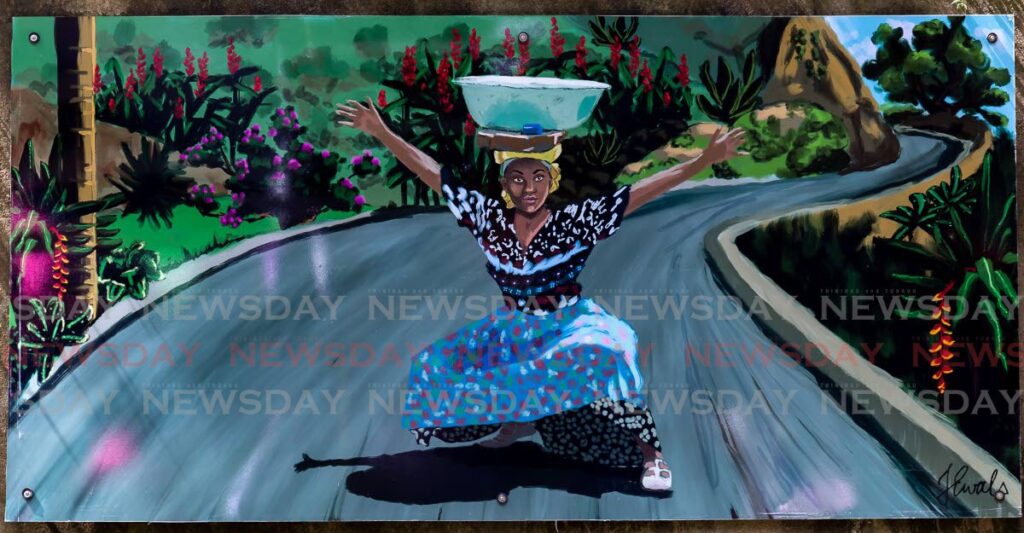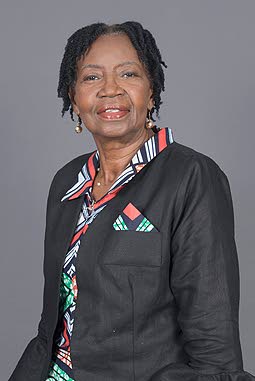Flowering of visual arts in Tobago

Dr Rita Pemberton
The development of the visual arts in Tobago, which was influenced by the island’s history, culture and environment, occurred in four phases which began from the earliest times, when the island was occupied by the First Peoples.
They were the island’s first visual artists, whose art was an integral part of their everyday lives. They lived with and through their art, which can be seen in their tools and weapons of stone, shells, wood and animal bones, their simple household furnishings and their religious images.
In the formal organisation of an art movement, three broad periods can be detected, commencing with the Tobago Art Group (TAG), from just before independence up to about 1980; the Art Committee of Tobago (ACT), up to about 2000; and leading up to the current Tobago Visual Arts Association (TVAA).
The second phase was that of the Europeans who submitted maps and images of the island to convince their home governments of the merits of gaining possession of the island and the prospects it offered for profitable colonisation.
The first known images of it were those captured by Sir William Young II, baronet, and Governor of Tobago from 1807-1815, who provided images of Tobago’s scenery in 1807-1812 intended to sell the idea of the investment potential the island offered.
In 1834, D Mc Arthur produced an image entitled Scarboro.
The internationally renowned English photographer Norman Parkinson, who took up residence in Tobago in 1954, captured several images of the island, some of which were used at major international fashion shows.
During the second phase, when the British gained possession of the island in 1763, Africans were introduced to provide labour on the sugar and other plantations established there. Their overly demanding work schedule precluded their involvement in visual arts, and in addition, everything African was cast in the negative and classified as primitive, pagan, obscene, subhuman and therefore undesirable, and to be stamped out in favour of European-style “civilisation.” This negativity was endorsed by schools and churches and by the ruling and upwardly mobile groups which upheld adherence to European values and practices for a long time.
However, the Africans resisted and gave expression to their cultural traditions, which served as their source of strength. The strongest contribution of enslaved Africans was to the performing arts, in music and dance.
Art was not considered a serious subject for the early, church-run schools, and where it was offered in the later-established primary schools, it was diversionary. When secondary schools were established, art was not considered suitable for students at the grammar-type institutions, who should be prepared for careers in “useful professions.”

The precursor to change came through a push from below during the third phase of the development of art. The first Tobagonians to become involved in the visual arts were encouraged by the artist the Rev Ivor Jones, who was appointed principal of Bishop’s High School in 1946. A group of enthusiasts, including former politician Basil Pitt and teachers Badroul Armstrong and Enola Arnold, formed the Tobago Amateur Artists Club during the 1950s. They became members of the Association of Art Teachers of TT and represented the Tobago chapter.
The status of art as a career choice had not yet changed, but Arnold continued teaching and took her art seriously, becoming one of the first known dedicated art teachers at the secondary-school level in Tobago.
Recognising the need for a channel through which creativity could be expressed, a more serious attempt was made to form an art association. This was facilitated by the significant intervention of two patrons of the arts.
Edward Hernandez, who came from an artistic family, was interested in music and the steelband, but had a stronger interest in art. He trained at the Evening Institute of TT in the Arts (Extra Mural Studies, UWI), where he studied art and design and graduated as a multimedia artist and designer. He worked as a teacher until 1959 and was a production management trainee at Kacal’s Woodwork Shop in Petit Valley, leading him to produce a significant amount of wood sculpture.
Under the influence of Dr JD Elder, professor of anthropology, and Dr Lou Lichtveld, professor of history and director of the Mt Irvine Museum Trust, Hernandez became involved in museography and heritage research. He selflessly offered to share his talents with any and every interested person on the island, and the response was gratifying. What was needed was a space for these classes.
The establishment of the post of cultural officer for Tobago in 1958, which was filled by former teacher and social welfare officer Eileen Guillaume, “stimulated a cultural renaissance” that created waves of folk performers and cultural researchers which catapulted numerous Tobagonians to national prominence in the 1950s and 1960s.
Guillaume promoted cultural activities in each village and encouraged the formation of folk performing groups, to give full expression to indigenous music, art, dance and song. She stimulated the formation of the Tobago Drama Festival, Tobago Arts Festival and the Tobago Music Festival, and also facilitated the reorganisation of the Steelband Association and the Carnival Development Committee of Tobago.
In addition, she organised a space below what was then the library to be renovated and dedicated as the “art room,” and this became the de-facto art gallery of Tobago. The space was outfitted with a potter’s wheel, kiln and all the art materials required for elementary school students. Hernandez and other senior artists regularly led art classes.
Guillaume was also instrumental in establishing the Tobago Photographic Society in another space, around the corner from the Art Group, which was also outfitted with equipment and supplies for people interested in photography.
Equipped with its space, on March 8, 1961 the Tobago Art Group (TAG) was officially established, with a membership of about a dozen. This was the fourth phase of the development of art in Tobago.
Arnold became the first president, while Hernandez was the vice-president and James Armstrong an executive member. Other founding members included Alfred James, Lucy Yorke, Abby Harris, Clayton Grimshaw, B Flarsheim, Sumaria Sobers, Eugene Benson, John Walford and Pat De Nobriga.
Classes were held for junior members, and on Saturdays for schoolchildren, and a training programme was held. Then a junior branch of TAG was formed and a culture of art was well grafted into the society.
In 2000 TAG was replaced by the Tobago Art Committee, and with the return of a number of university-trained artists, the Tobago Visual Artists Association was formed and is the current organisation managing artists and organising exhibitions to showcase the art of Tobago.
There has been a flowering of the visual arts which is reflected in the numbers of schoolchildren opting for art, the increase in the membership and both the volume and range of art produced on the island.


Comments
"Flowering of visual arts in Tobago"